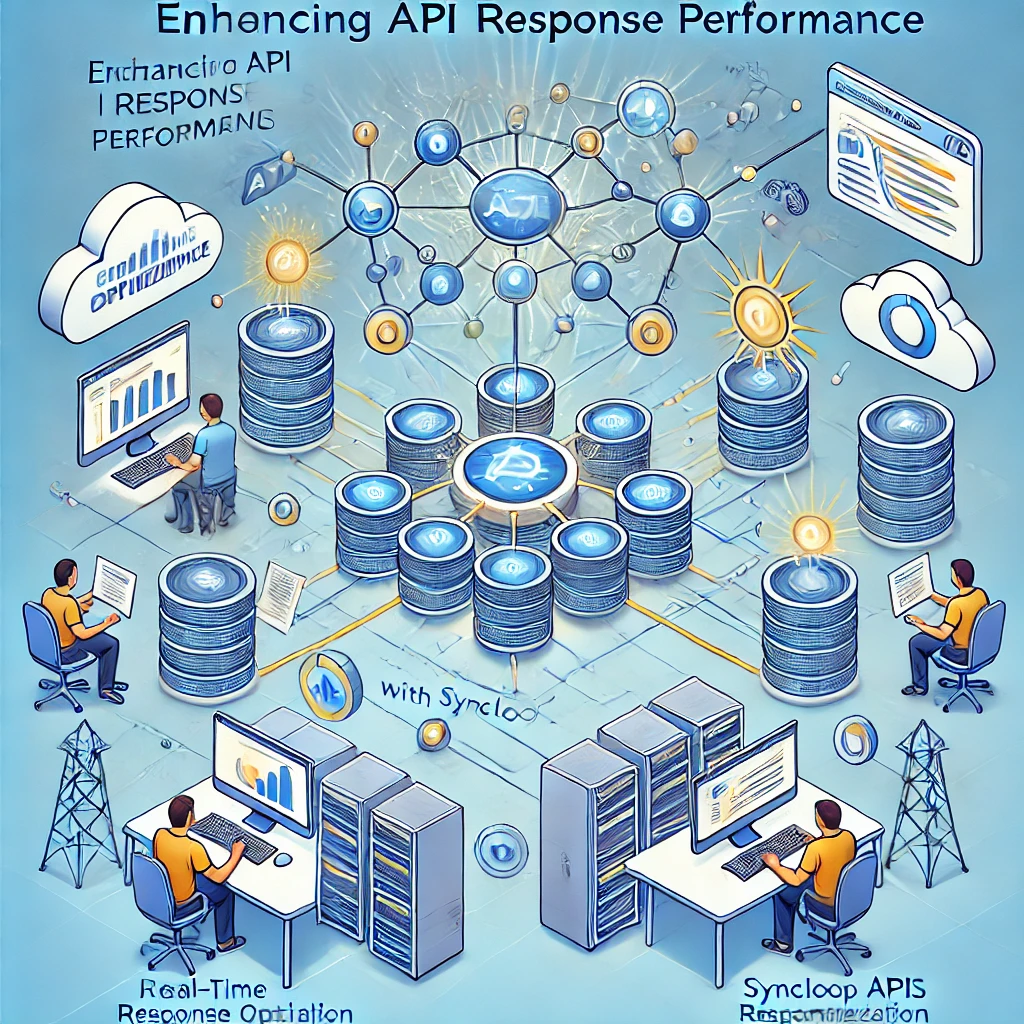Enhancing API Response Performance in Distributed Systems with Syncloop

Syncloop provides advanced tools to optimize API response performance in distributed environments. With features like real-time monitoring, load balancing, and workflow automation, Syncloop helps developers build efficient and reliable APIs. This blog explores strategies for enhancing API response performance in distributed systems using Syncloop and shares best practices for implementation.
Challenges in Distributed Systems for API Response Performance
- High Latency: Network delays between distributed components can increase response times.
- Resource Contention: Limited resources shared across services can lead to bottlenecks.
- Error Propagation: Failures in one service can cascade, affecting overall performance.
- Inconsistent Data Synchronization: Delays in updating data across distributed nodes.
- Monitoring and Debugging: Gaining visibility into API performance across multiple services.
How Syncloop Optimizes API Response Performance
Syncloop provides robust tools and features for addressing performance challenges:
- Dynamic Load Balancing Distribute API traffic intelligently across multiple nodes to reduce bottlenecks.
- Real-Time Monitoring Track latency, throughput, and error rates to identify and resolve performance issues.
- Caching and Data Optimization Implement caching at various levels to minimize redundant processing.
- Asynchronous Workflows Offload non-critical tasks to asynchronous processes to improve response times.
- Error Handling and Retry Mechanisms Automatically retry failed requests and apply fallback strategies to maintain system resilience.
- Scalable Architecture Support high-concurrency scenarios with dynamic resource allocation.
Steps to Enhance API Response Performance with Syncloop
Step 1: Analyze Current Performance
Use Syncloop’s monitoring tools to:
- Measure current response times, latency, and throughput.
- Identify high-latency endpoints and bottlenecks in workflows.
- Track error patterns and their impact on performance.
Step 2: Implement Load Balancing
Leverage Syncloop’s load balancing capabilities to:
- Distribute API requests evenly across available nodes.
- Configure region-specific traffic routing to optimize response times for global users.
- Monitor load distribution to detect and resolve imbalances.
Step 3: Enable Caching
Optimize data flows by implementing caching strategies:
- Use edge caching for frequently accessed static content.
- Implement in-memory caching for dynamic but repeatable queries.
- Apply cache invalidation rules to ensure data freshness.
Step 4: Optimize Workflows
Use Syncloop’s workflow automation tools to:
- Break down complex workflows into smaller, asynchronous tasks.
- Offload non-critical tasks to background processes.
- Prioritize critical paths to ensure fast response times for essential requests.
Step 5: Enhance Error Handling
Improve system resilience by:
- Configuring automatic retries with exponential backoff for transient failures.
- Defining fallback strategies for critical workflows during outages.
- Monitoring error rates to identify recurring issues and optimize accordingly.
Step 6: Scale Resources Dynamically
Enable Syncloop’s dynamic scaling features to:
- Allocate additional resources during peak traffic periods.
- Scale down during low-traffic periods to optimize costs.
- Monitor scaling events to ensure smooth transitions.
Best Practices for API Performance in Distributed Systems
- Minimize Network Latency Use CDNs and strategically placed data centers to reduce delays.
- Leverage Asynchronous Operations Use non-blocking processes to handle high-concurrency workloads efficiently.
- Implement Fault Tolerance Use Syncloop’s error handling and retry mechanisms to maintain stability during failures.
- Monitor Continuously Use real-time monitoring tools to track API performance metrics and address issues proactively.
- Optimize Data Flows Reduce payload sizes and use efficient serialization formats like JSON or Protocol Buffers.
Example Use Case: E-Commerce Platform
An e-commerce platform uses Syncloop to enhance API response performance:
- Dynamic Load Balancing: Distributes traffic across multiple regions during flash sales.
- Caching: Implements edge caching for product catalogs and in-memory caching for frequently accessed user data.
- Asynchronous Workflows: Offloads inventory updates to background processes, ensuring fast order placements.
- Error Handling: Configures retries and fallbacks for payment processing APIs to minimize disruptions.
- Monitoring: Tracks latency and error rates in real time to resolve issues before they impact users.
Benefits of Using Syncloop for API Optimization
- Improved Response Times: Deliver faster API responses for a better user experience.
- Enhanced Scalability: Handle increasing traffic without performance degradation.
- Better Resilience: Maintain system stability with robust error handling and retries.
- Cost Efficiency: Optimize resource usage with dynamic scaling and caching.
- Actionable Insights: Use real-time analytics to refine workflows and improve performance.
The Future of API Performance Optimization
As distributed systems become the norm, optimizing API response performance will be critical for maintaining user satisfaction and operational efficiency. Syncloop equips developers with tools to build high-performing, resilient APIs, enabling businesses to scale seamlessly and deliver exceptional experiences.
Image Description
A conceptual illustration showcasing Syncloop’s tools for enhancing API response performance in distributed systems, featuring caching, load balancing, and real-time monitoring. The image highlights optimized workflows and efficient API operations.
Back to Blogs